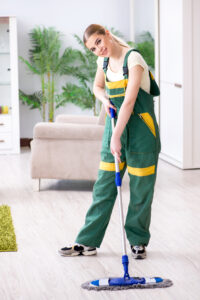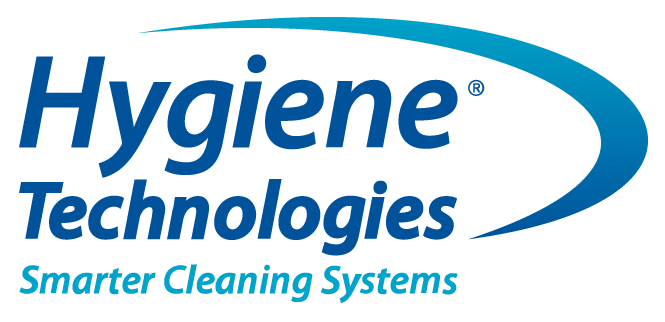Hello Guest,
According to some reports, mops date back as early as the Roman times, and although materials used have improved, they are not much different from what is used today. It is difficult to understand why string mops are still used, maybe with an exception of soaking up spills, as the alternative microfibre or ‘flat’ mop options are so much better in every respect.
Firstly, what is the correct mop to use – the following lists the main styles used and which is best for each application. (see page 38 of our catalogue for more detailed information on this). For some information on string mops v flat mops check out this blog post.
- Dry mopping – either as a dust removal process prior to damp mopping or cleaning with a floor scrubber, or for the removal of dry product in the food industry such as milk powder, flour dust, breadcrumbs etc:
- Available in either a wrap over or Velcro style
- The wrap over style has a short pile which is suitable for most general dust mopping applications. This is not actually microfibre but 100% polyester, so instead of physically trapping dirt in the fibres like microfibre it relies on static electricity to create a charge that the dust sticks to. Polyester has approx. 10 x the static charge than microfibre does. It is important that these mops are used correctly, as you will lose the static charge (and all the dust you have collected) if you lift the mop up during mopping for instance. See here for a guide on how to use these correctly.
- The Velcro style dust mops are microfibre but with a lot longer pile so works to trap and hold dry particles and is used more like a bulldozer for larger volumes of dry particles. The longer pile also works better for floors that are uneven.
- Damp mopping – these are all of the Velcro backed style and available in different widths, depending on the floor area you have to mop. Bear in mind that a damp 60cm mop can be more difficult to move over the floor so often you are better to go with a 40cm mop but use more mops to complete the task.
- There is a general purpose option which works in 90% of applications, which has nylon friction barriers sewn in to make it easier to move across the floor but the bulk of the mop is microfibre which is very effective at dirt removal, just with water only, no chemicals.
- The long pile micromop option is useful when you have large areas like a long corridor to mop as they hold more moisture in them meaning you can clean further without the mop drying out.
- There is a specialist microfibre mop that has a lot more nylon fibres woven in so give it more of a scrubbing effect for the likes of safety or non-slip vinyl and is also excellent at removing black scuff marks off vinyl floors (with a little pressure from your foot on top of the mop frame).
- Disposable mops are great for those very high hygiene areas where there is too much risk of re-contamination to use launderable mops, however this is an exception with the more sustainable option being a reusable mop that has a robust laundry programme that ensures thermal sanitation and good controls to keep the laundered mops as hygienic as possible before re-use.
- See here for a guide on how to use damp mops correctly.
 The next thing to consider with all the plethora of options out there is what will provide the best value for money:
The next thing to consider with all the plethora of options out there is what will provide the best value for money:
- Mop heads; What we have found from experience is that often the various brands out there will clean in a similar way and can be just as effective at what they do, but the difference is in how long they last. Too many times we have seen cheap mops fall apart from poor stitching (or stitched with a material that is not water resistant), they shrink when washed, the Velcro backing wears out and you end up getting maybe 30 or so washes out of them. A well made mop head you should be able to achieve 500+ wash cycles (at 90 degrees C) before they start to become too worn to be effective, making them immensely more cost effective over time.
- Mop frames; The frames themselves are often quite similar between brands but the aspects that make the difference for how long they last are the swivel and the Velcro. The swivel should have thick enough material that it doesn’t flex when pressure is applied – too often the material is very thin and breaks after a short time. Also check if there is an option to make the swivel more rigid for above head height cleaning of ceilings and the likes. Some have a rubber sleeve that goes over it to limit the movement but these break and come off quite easily. Lastly, Velcro will wear out over time so ensure there is an option for replacement Velcro strips and end caps to save you having to replace the whole frame.
- Mop handles; These can be fixed or telescopic – often the telescopic ones are always used fully extended so if this is the case for you then there is not a lot of point buying telescopic unless you have limited storage space. However the best thing about telescopic handles is the ability to adjust it to suit the height user, ideally should be used around eye level height. Another thing to consider, especially for those in the food industry who will already have a bunch of other colour coded cleaning tools, is to choose a handle that will fit the mop frame as well as all the other cleaning tools on site and can obviously be colour coded as well.
Hopefully these tips can help you make the right choices when it comes to mopping, however we have decades of experience in our team to help you with the best option to suit your requirements, simply fill in the form below and one of our team will be in touch.
[/et_pb_text][/et_pb_column]
[/et_pb_row]
[/et_pb_section]
